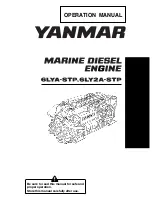
COOLING SYSTEM
□
Bends should be smooth and have a generous radius. Avoid mitered bends and crush-bend
tubing.
□
Beaded pipe ends
must
be used to prevent the hose from separating from the pipe.
□
Fittings on the lines (especially
fi
ll line)
must not
reduce effective size.
□
Quality constant tension hose clamps
must
be used to maintain tension and prevent leakage
during both cold and hot operation. Use the correct style of clamp when silicone hoses
are used.
□
Connections
must
be
fl
exible enough to accommodate relative motion between connecting
components.
□
Quality hoses that can withstand the expected temperatures, pressures, coolants, and
inhibitors
must
be used.
□
Corrugated hoses are not recommended.
□
Hoses must be fuel and oil resistant.
□
Hoses should not span more than a .6 m (2 ft) unsupported section. Use reinforced hose for
longer spans.
□
Care should be taken to keep hose connections on the same plane. Use short straight
sections of hose.
□
All connecting hoses and pipes
must
provide adequate support to prevent collapse and
rupture. Loose internal springs are not recommended.
□
All lines
must
have a continuous downward slope without droops to ensure good cooling
system draining and re
fi
lling capabilities. Additional drains and vents may be required if
this is not possible.
□
All vent to
fi
ll lines must have a continuous upward slope to the radiator top tank.
□
Locate a drain plug/cock on the lowest portion of the cooling system to ensure complete
draining and removal of any sediment (remember that the bottom tank may not be the
lowest point).
Auxiliary Coolant Flow Path Circuitry
Consider the following when using add on components such as cab heater systems, air
compressors, auxiliary oil coolers, retarders, exhaust gas cooler, etc.:
□
Location of coolant supply and return connection points.
□
Restriction to coolant
fl
ow. Select engine connection points that will give adequate
fl
ow
under all operating conditions, but do not adversely affect main engine/radiator
fl
ow.
□
Location of auxiliary components. Components should be mounted below the top tank or
surge tank coolant level whenever possible. This will allow removal of trapped air and to
help complete
fi
lling of the cooling system.
7-22
All information subject to change without notice.
(Rev. 03/06)
7SA250 0603
Copyright © 2006 DETROIT DIESEL CORPORATION
















































